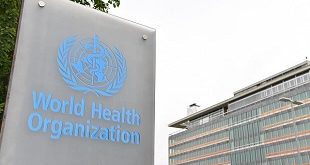
FAO launches ambitious project to transform East African food safety systems
Kampala, Uganda | PATRICIA AKANKWATSA | Food safety risks pose a substantial threat to public health in Africa, hindering efforts to boost agricultural trade and economic development.
Unsafe food not only jeopardises health but also reduces the nutritional value of food, particularly for vulnerable populations, contributing to malnutrition.
According to the World Health Organization (WHO), foodborne diseases are responsible for 137,000 deaths and 91 million acute illnesses on the continent each year, representing one-third of the global toll.
According to the Ministry of Health, over 60% of reported foodborne illnesses in Uganda originate from the consumption of fresh and perishable foodstuffs like fish, milk, fruits, meat, and vegetables. These products are frequently sold through both formal and informal market channels, creating challenges in maintaining consistent food safety practices across the entire supply chain.
The primary source of these illnesses is exposure to pathogenic organisms, including bacteria, viruses, parasites, protozoa, and fungi, which contaminate food and are subsequently transmitted to consumers. Diarrhoea is a prevalent manifestation of these foodborne diseases. However, Uganda faces an additional threat – chemical contamination.
Analysis of food and food products from Ugandan markets has revealed the presence of concerning chemical hazards. These include heavy metals such as arsenic, cadmium, and mercury, as well as residues of pesticides, insecticides, disinfectants, and veterinary drugs. The presence of these contaminants underscores the critical need for enhanced food safety measures throughout the entire food supply chain, from agricultural production to final consumption.
In this regard, the Food and Agriculture Organisation of the United Nations (FAO) with funding from the African Development Bank (AFDB) launched a new project aimed at strengthening food control systems and improving food safety laboratory capacity in East Africa (EAC)
One of the most significant long-term impacts of this project is its potential to transform the region’s food safety landscape.
While speaking at the launch on September 3rd at Golden Tulip Hotel, Farayi Zimudzi, the FAO coordinator for the EAC sub-region said that outdated and insufficient food safety Policies and Regulatory frameworks are a key contributing factor to food safety challenges in Africa.
“The limited capacity to maintain routine control activities due to inefficient food control systems is resulting in increased levels of noncompliance with international market standards,”
“By harmonising food safety standards and regulations across the five participating countries that is; Kenya, Rwanda, South Sudan, Uganda, and Tanzania, it will eliminate inconsistencies and disparities in food safety requirements, ensuring that all stakeholders operate under a common set of rules, Zimudzi said.
“Consistent standards will drive producers to adopt best practices, ensuring that their products meet or exceed international safety requirements, “she added
The project, implemented in partnership with the German International Development Cooperation (GIZ), the East Africa Community (EAC), the Association of Official Agricultural Chemists (AOAC), and the International Food Safety Laboratory (IFSL) of Canada, seeks to enhance the region’s agricultural competitiveness by aligning national food systems with international standards.
Dr Patience Rwemigisa the assistant commissioner of agricultural extension at the Ministry of Agriculture, Animal Husbandry and Fisheries (MAAIF), says the project offers a transformative opportunity for East African agriculture.
“By strengthening our food safety systems, we can enhance the quality and marketability of our agricultural products, expand export markets, and contribute significantly to the region’s economic development.
“With improved food safety, we can increase consumer confidence in our products, attract premium prices, and differentiate ourselves in the global marketplace. This will create new opportunities for farmers, processors, and exporters, driving economic growth and reducing poverty,” she says.
According to the World Bank, the agricultural economy employs 65–70% of Africa’s labour force and accounts for about 23% of the GDP. Trade in agricultural products in East Africa contributes to 25-30% of the GDP and accounted for a total export value of $ 11.3 million of global trade in 2018.
The region’s key export earnings are realised predominantly from coffee, tea, vegetables as well as cut flowers. In Uganda, the agri-food sector accounted for about 24% of GDP in 2021/22 FY, and 35% of export earnings. In Kenya, it accounted for 25% of GDP, while in Rwanda and Tanzania, the sector’s GDP contribution is 29% and in South Sudan 9.1%.
Dr Blaise Ouattara the food safety and quality officer at FAO said that the project’s focus on enhancing laboratory capacity will enable countries to detect and respond to food safety incidents more effectively.
“By strengthening surveillance systems and improving laboratory testing capabilities, the region will be better equipped to prevent and contain outbreaks of food-borne diseases,”
Food safety policies
Uganda’s food safety landscape is characterised by a fragmented approach, with responsibility shared among multiple government ministries, private sector entities, and civil society organisations. While this collaborative approach has its benefits, it also presents challenges in terms of coordination and efficiency.
The Ministry of Health (MoH), Ministry of Agriculture, Animal Industry, and Fisheries (MAAIF), and Ministry of Tourism, and Trade and Industry (MTTI) all play a role in ensuring food safety. Additionally, the Uganda National Bureau of Standards (UNBS), Dairy Development Authority, Uganda Coffee Development Authority, and various departments within MAAIF have specific responsibilities for regulating particular food commodities.
Although the country has made progress towards improving the food safety environment and reducing the burden of foodborne disease, a lot remains to be done. Much of the burden is from inadequate handling of food during production, processing, storage, transportation and retailing. A strong food control system is required to ensure current gaps are addressed.
Uganda lacks a centralised authority responsible for overseeing food safety issues. This fragmentation can lead to inconsistencies in regulations, standards, and enforcement, hindering effective food safety management.
While Kenya developed a Food Safety Policy in 2013, it hasn’t yet been fully implemented. Tanzania, lacking a comprehensive food safety policy, has adopted a national food safety emergency plan. South Sudan and Rwanda also operate without specific food safety policies.
Rwanda, however, has integrated food safety monitoring into its One Health initiative. This approach recognises the interconnectedness of human, animal, and environmental health, emphasising the importance of holistic interventions to prevent and control diseases. While One Health provides a valuable framework, it may not be sufficient to address all the specific challenges and complexities of food safety in Rwanda.
 The Independent Uganda: You get the Truth we Pay the Price
The Independent Uganda: You get the Truth we Pay the Price


